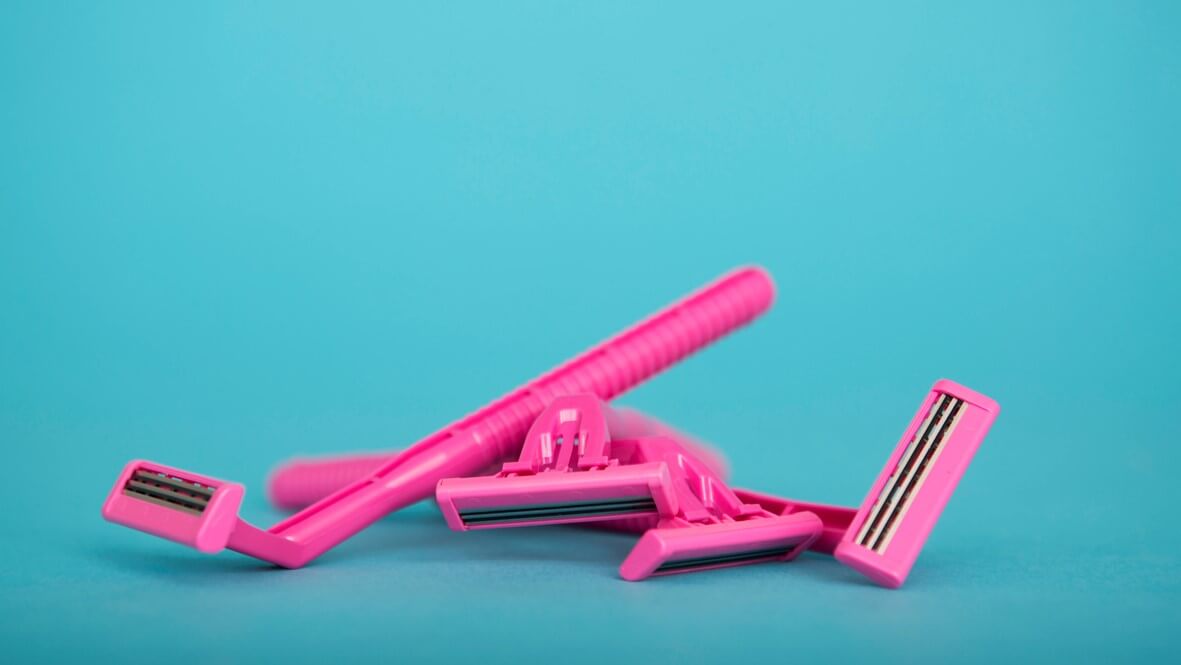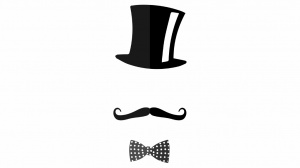Razors aimed at female consumers are usually pink. But beauty brands should note that some women like other colours too.
Modern Day Misogyny? The Fail Of The Shave Clubs
Razors aimed at female consumers are usually pink. But beauty brands should note that some women like other colours too.

It seemed like such a good idea. Shave clubs, saving you money by delivering razors regularly to your door: a direct-to-consumer, online company disrupting traditional ways of selling a basic product, attracting millions of customers via catchy, approachable marketing.
And it was a good idea, as the proliferation of imitators and the original’s $1bn sale to Unilever soon proved. Men who are saving a fortune will be cheering their efficiently shaven heads off.
Women, on the other hand, may think a dollar a hefty price – after all, who wants to pay for sexism? When I look at those clubs – and really, why wouldn’t I, as these companies well know, women shave too – I can barely see for pink backgrounds and curlicued fonts. And I feel a sensation that won’t be unfamiliar to any woman but should be anathema to every marketer: disappointment.
Don’t think pink
Where did it come from, this idea that pink is catnip for women? It’s ridiculous. Some women love pink; some don’t. To treat women as all one person is ludicrous – and criminally lazy. We aren’t a niche group, we are 51% of the population. Any branding and marketing initiative that forgets that, is alienating an awful lot of people, and what for? The comfort of not having to think.
“I know what women want” is as bad as “who knows what women want?”
Good marketing is all about avoiding typecasting. I may have an idea of who my customer is, of some of the things she might like, but if I start telling her how to think I’m lost. Once upon a time, branding meetings would start with the target person – “she’s a woman, she’s 25…” Nowadays, nobody in their right mind closes down their possibilities this way.
Instead, we ask about the mindset of the target consumer and their attitude. That way, the product will talk to the person it’s meant to please. This isn’t actually about women. You can stereotype men too and they won’t like it either.
It just happens a lot less, because it seems to be more readily acknowledged that different men have different thoughts (or is it quite simply that there are people out there who don’t credit women with any thoughts at all?)
Gender is not the issue
Or certainly, in a unisex product, it shouldn’t be the issue. There is an increasing understanding that ‘neutral’ doesn’t equate to ‘male’ – but we still have some way to go, as Lego found when it produced a line of toys aimed at girls (great!) that were all pink and purple (not great).
This was particularly painful for those of us who think of Lego as brilliantly unisex, right from the time of its 1970s ads with girls in dungarees, playing with – Shock! Horror! – the same toys as the boys.
And this is only one of the traps lying in wait for the gender-obsessed marketer. Leave aside the fact that, in this day and age, gender is no longer a simple binary matter, and marketers who jump into this particular issue may find themselves out of their depth.
Poking fun at sexism is one thing – the American brand of pink wine called White Girl Rosé, for instance – but it can go badly wrong, as Sprite discovered with their much-criticised #BrutallyRefreshing takeover of Joe.com.
Challenge the right codes
Pink, sadly, is far from being the only cultural assumption we make about women. Take whisky. Do women dislike whisky? Of course not – some hate it, some love it, just the same as men. It’s a falsehood, just as much as announcing that a single ethnic group has a particular feeling about single malt. And the trouble is, fall for these clichés and you will never be able to alter a product’s consumer base.
People who tackle the challenge of getting more women to buy whisky by coming up with some sort of “lady-friendly” whisky brand are missing the point. The gentlemen’s club feel of most current whiskies isn’t an intrinsic part of the product, it’s how they have been marketed since marketing began.
Some women may like that. Some may feel excluded. The secret is to find a narrative that moves away from gentlemen – without moving towards “ladeez”. Is whisky manly? Why do we think whisky has to be manly? What do we mean by manly, anyway – certainly not the opposite of womanly. Take the conversation elsewhere, and make the brand appealing in a more modern way, and gender will become an irrelevance.
Avoid the cliché
Don’t get me wrong – there’s no crime in having a central person you keep in mind, who has some attributes and a frame of reference. Just don’t make it so detailed that you are absolutely certain that colouring anything a certain shade will automatically fill your target audience with the lust to spend.
Marketing to women is like marketing to men, only…
… No. No only. Rip up your lazy definitions and start again. There is nothing more unflattering than being told what to think or what to like. Clever marketing says: “You might like this.” Lazy marketing has already made a set of obvious assumptions, based on something as arbitrary as skin colour, age group – or gender.
Take the Dollar Shave Club site. It’s infuriating: there’s nothing enticing, from a marketing viewpoint, about watching a man shave. But the leather accoutrements are nice. I liked those. The message that I’m not “supposed” to like them – that they’re for the boys, and I should run away and find something pink and fluffy – is profoundly alienating. I like leather, and who is a brand and marketing exec to say I shouldn’t?
Acceptance is key. The reason gentlemen’s clubs are alienating is because they are intended to exclude. Good marketing should always feel inclusive.
Feminism is not your plaything
Some women call themselves feminists; others don’t. And different people understand very different things by the term. But adopting the language or attitudes of feminism for marketing ends is a terrible, condescending idea. No consumer likes the brand that says one thing and does another – claims to be gender neutral and makes the women sidekicks to the main, male show while covering “their “ products in a colour suitable for babies.
Don’t pay lip service, or hijack something as important to many people as feminism to sell your product without embedding its values in the brand. That’s no way to treat women. Whatever you’re selling, it has to be true and believable. Otherwise it will feel lying and shoddy. There isn’t much in between.
Beauty is in the eye of the beholder
There are products that are getting this stuff right, many in the beauty sector, where everyone knows that talking down to women works about as well as marketing Ugly Cream. Aesop is gender neutral; so is Jo Malone. Dove, another Unilever product, is too.
Drinks brands are also doing this well. Most craft beers don’t visibly assume that their purchaser is a beardy young beer geek – and that really is refreshing. Lone Wolf, the spirit brand from BrewDog, has gone to an extreme of neutrality. That was, specifically, our brief – the challenge was to make it look good.
The brand Lone Wolf will stand apart from society and do things differently, as the name and identity suggest. These are drinks for the enthusiast – whoever that might be.
This is not a novel idea. Remember the 1990s, with all those Kate Moss ads for brands like Calvin Klein? Gender neutral was sexy then, in every sense.
Brands that win are brands that don’t make assumptions
Apple has no gender coding. Nor does Nike. These are successful megabrands that treat every potential customer as an individual.
There’s also a rising demand for gender neutral baby products – clothes, toys, feeding and changing accessories – which say no to gender stereotypes. After all, why force little girls into pink before they get to make their own choice? Nobody wants to be limited by their biology.
Lisa Desforges is Strategy Director of B&B studio.
Thanks for signing up to Minutehack alerts.
Brilliant editorials heading your way soon.
Okay, Thanks!



